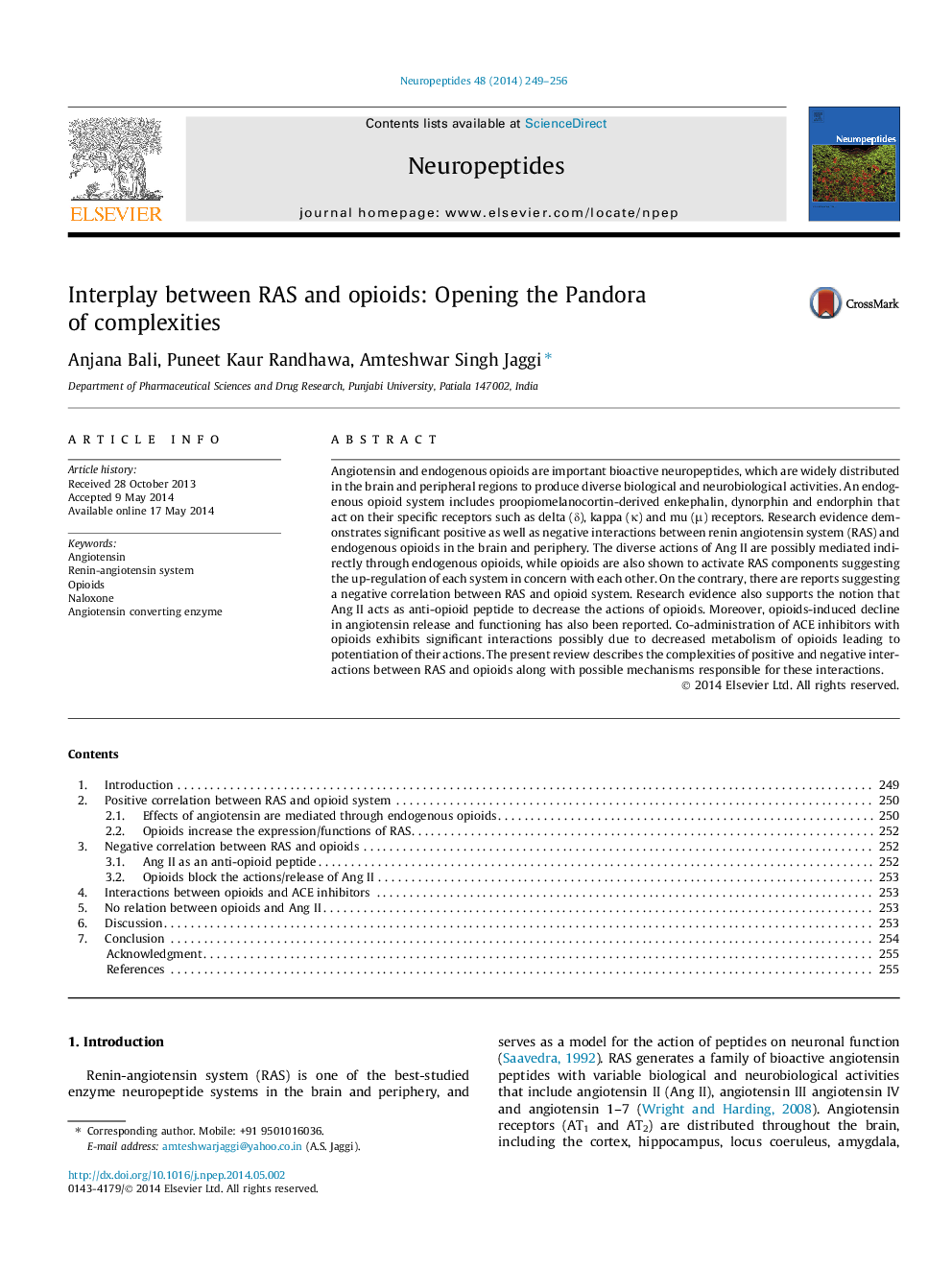| Article ID | Journal | Published Year | Pages | File Type |
|---|---|---|---|---|
| 2808061 | Neuropeptides | 2014 | 8 Pages |
Angiotensin and endogenous opioids are important bioactive neuropeptides, which are widely distributed in the brain and peripheral regions to produce diverse biological and neurobiological activities. An endogenous opioid system includes proopiomelanocortin-derived enkephalin, dynorphin and endorphin that act on their specific receptors such as delta (δ), kappa (κ) and mu (μ) receptors. Research evidence demonstrates significant positive as well as negative interactions between renin angiotensin system (RAS) and endogenous opioids in the brain and periphery. The diverse actions of Ang II are possibly mediated indirectly through endogenous opioids, while opioids are also shown to activate RAS components suggesting the up-regulation of each system in concern with each other. On the contrary, there are reports suggesting a negative correlation between RAS and opioid system. Research evidence also supports the notion that Ang II acts as anti-opioid peptide to decrease the actions of opioids. Moreover, opioids-induced decline in angiotensin release and functioning has also been reported. Co-administration of ACE inhibitors with opioids exhibits significant interactions possibly due to decreased metabolism of opioids leading to potentiation of their actions. The present review describes the complexities of positive and negative interactions between RAS and opioids along with possible mechanisms responsible for these interactions.
